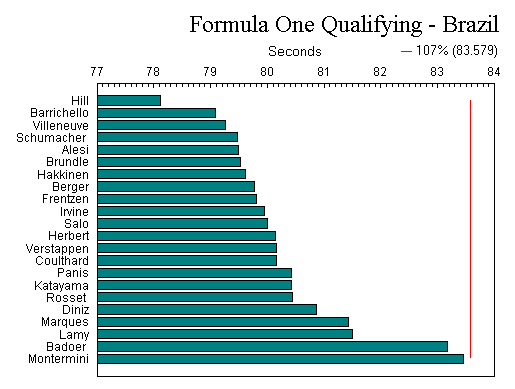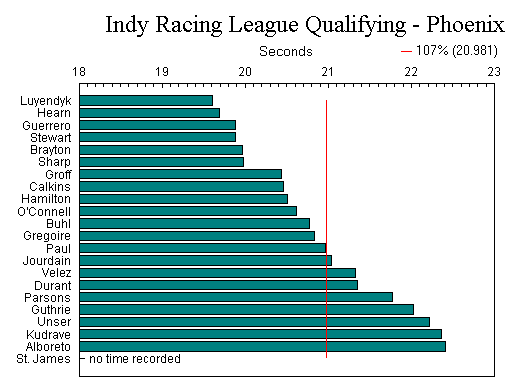

 The first time I heard about the 107% rule for qualifying, I found myself
elated about the future of racing throughout the Grand Prix circuit.
Many Formula One fans were worried about shrinking fields, shrinking
sponsorship, and the obvious interacting complications. A few others
felt that the 107% rule would pressure the low-end teams to take
qualifying efforts more seriously and show the world that they belong in
the Formula One series.
The first time I heard about the 107% rule for qualifying, I found myself
elated about the future of racing throughout the Grand Prix circuit.
Many Formula One fans were worried about shrinking fields, shrinking
sponsorship, and the obvious interacting complications. A few others
felt that the 107% rule would pressure the low-end teams to take
qualifying efforts more seriously and show the world that they belong in
the Formula One series.
The first Grand Prix was a disaster for the Forti Fords, and many fans believed that Forti would look for another place to compete. But in Brazil, Forti stepped-up and qualified well within the 107% rule, despite the heroic and dominating pole effort of Damon Hill. Forti not only escaped the early ride home, but they also avoided the final row on the grid (OK, let's forget technical violations in this discussion). I would argue that the 107% rule has been the additional pressure that teams like Forti will thank as the season goes on.

I am somewhat embarrassed to admit that I spent last weekend at an Indy Racing League event in Phoenix. The experience gave me a great chance to evaluate the 107% rule as it would apply to other major racing leagues. The Phoenix IRL race had a "full field" of 22 cars; however, if the 107% rule was in effect in this evolving series, the field would have consisted of only 13 cars. I sat and watched Michele Alboreto start fully 20 mph slower than the pole speed. I wondered if Michele was recalling his former Formula One wins as he was lapped 2.5 miles into the race. Clearly, the 107% rule would be devastating to the IRL at this point in time. This is a new series struggling to claim some level of health, and unlike Formula One, they must do everything in their power to give fans some illusion of a vibrant series. In reality, any driver with any piece of junk could line up and race in the IRL--I am glad Formula One stands-up against such low entry standards.

The world-trotting CART series does not fair much better. In Miami, five of the 28 starters would be home watching the race with a 107% rule in effect. Similarly, five other cars would have been disqualified in the CART race in Rio. The Australian race would have allowed 23 of the 25 cars to compete given the higher standard set by the FIA. I tracked the NASCAR boys in Darlington and Bristol, and they must laugh at the 107% rule. Face it, NASCAR is running "stock" cars, and not surprisingly, these low-tech machines are closely bunched in their qualifying efforts. Believe it or not, even a 103% rule would have no effect on the NASCAR grid. Their cars qualify within small differentials, and the entire racing world could probably stay within 107% of the pole time.
The 107% rule is controversial in the 1996 Formula One series, but I believe that any series claiming to be the pinnacle of racing should maintain high standards, and force teams to stay somewhat competitive in their qualifying efforts. Technical violations may be more common as the pressure to qualify mounts, but as we saw in Brazil, the violators will be caught and punished appropriately. Give me the 107% rule, and let the lackeys find their way to the IRL.